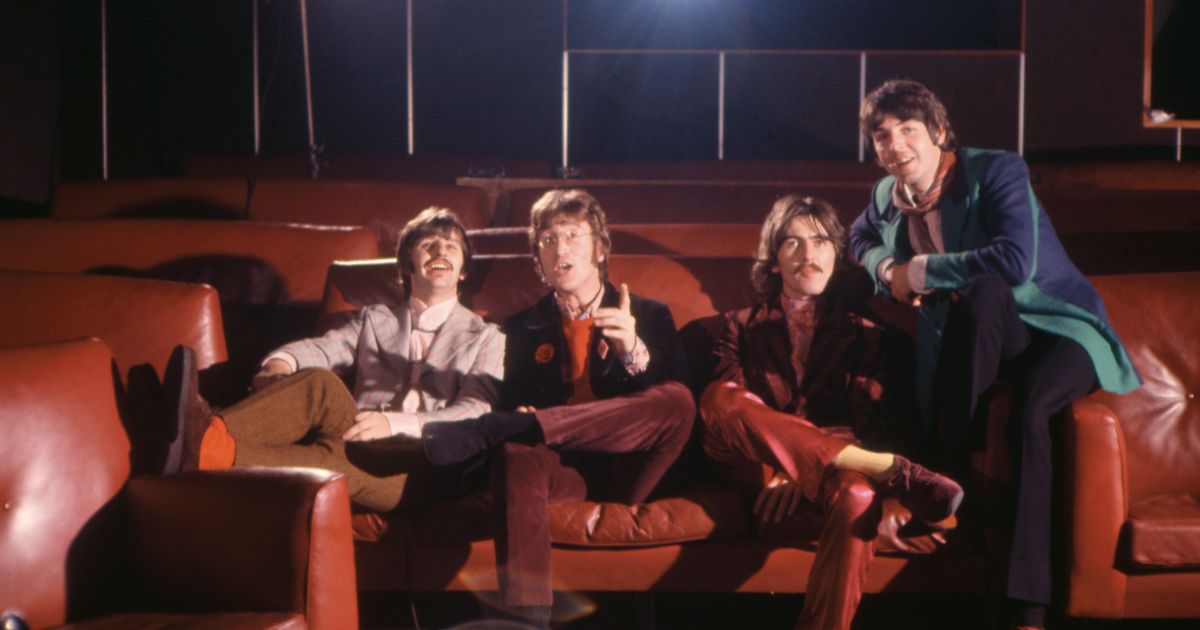
Gia Margaret’s Romantic Piano Builds a Monument to Life’s Enchanting Beauty
I am a purveyor of many musical tapestries, but none move me at a consistent clip quite like the corners where instrumental and ambient compositions hangout. It’s not the schematics of twinkling, airy movements or the wordless beauty curdled into natural textures that set me adrift; it’s the idea that something so against-the-grain of modern musicality—especially two-minutes of a few notes interchanging atop atmospheric backing loops—can give you a brand new language to face your next day with. To sit with Gia Margaret’s latest LP—Romantic Piano—is to give yourself that gift of newness. Every song scratches a once-unknowable itch; every sequence tumbles blissfully into the next. It’s a dearly beautiful exercise in complexity.
The story goes that Margaret—a Chicago artist whose talents cross over into every known ether—lost her voice shortly after releasing her debut album There’s Always Glimmer four years ago. To lose access to your instrument, I can only imagine what kind of trauma that might bring on top of an already insurmountable sequence of damage. But Margaret—while on vocal rest—kept going, making Mia Gargaret: A rich, breathtaking project that found her processing and reckoning with her own grief through synths, loops and sampling. The soft, choral voice she’d once placed so deftly at the center of all of her work was now silent.
I very much enjoyed There’s Always Glimmer, but it feels like that part of Margaret’s artistry is currently on the backburner. When a musician makes a pivot as immense as hers, it wouldn’t be fair to compare apples and oranges. Mia Gargaret, on the other hand, felt like a one-of-a-kind risk. It was an act of creative and emotional survival, and now it has become a piece of Margaret’s world she is not interested in letting go of just yet. So now, we have this document—this concerto—of clicks, chirps and blurs. It is at once Margaret’s greatest and most-resoundingly hopeful effort yet.
Romantic Piano was engineered predominantly by Sean O’Keefe, while Margaret mixed and produced much of it alongside Yoni Wolf. Employed across the album are, as Margaret calls them, field recordings of nature that delight in unison with the pianos, horns, drums, bass and vocals she and her peers plug into throughout the 12-song, 27-minute run-time. Perhaps the greatest part of Romantic Piano’s makeup is how human all of it sounds. Much akin to the recent, swelling trend of artists recording their albums in a live headspace—in hopes of harnessing what an on-stage energy might look like on tape—Margaret catches all of the imperfections happening concurrently—whether it’s a crackle of house foundation of a street growing busy—and fashions everything into an immersive nebula of DIY ethos. At its core, Romantic Piano is a perfect love-letter from Margaret about embracing the instrument she turned to when her voice couldn’t continue. But by no means is her piano-playing merely a second option in the wake of change. No, no. By the tracklist’s end, Romantic Piano morphs into the opus of someone whose talents and vision could give a crack of lightning a run for its money.
The album opens with “Hinoki Wood,” a serene stroke of repetition and layering. A single note hums in the background, as Margaret’s piano chords form a progression as restrained as a television commercial jingle. It’s upbeat—as much as a sub-two-minute song can be—but what’s wonderful about “Hinoki Wood” is that you can hear the creaks of Margaret’s ivories as she presses them. “Cicadas” exudes fragments of Jon Brion’s Eternal Sunshine of the Spotless Mind-era whimsicality, with dial tone notes dueting with rib clicks from actual cicadas. Ever so nimbly, you can hear a moaning floorboard, or the wince of a screen door closing.
“Ways of Seeing” is one of my personal highlights, as you hear the crunching noises of someone walking through a pile of leaves. This song is the proper introduction to what Romantic Piano gnaws at: the very natural, organic textures of everyday life that are present and beating and breathing across our orbits. And as such, they are present in these sonic moments, too. Margaret’s piano doesn’t take any one specific direction, as if she’s sitting on the bench and flexing her fingers atop the ivories ever so gently. On “Juno,” the synths’ sounds transform into a dainty horn section, while blinking digits pulse ever so vibrantly atop Margaret’s light, high-octave treble.
No song lingers around too much for its own good. A tune like “Sitting at the Piano” leaves as quickly as it arrives, while Margaret plays her notes to the tune of some birds chirping nearby. There are small breaths she lets out, all of which are so faint that you might miss them if you’re not wearing headphones. The track blends immediately into “Guitar Piece,” which is not as much a brevity as its predecessor. Though Romantic Piano is titled the way it is, the album is not limited compositionally. On “A Stretch,” Jonnie Baker plays saxophone and turns the arrangement into a quasi-classical-jazz arpeggio. “Guitar Piece” is Margaret’s big, directional moment, as she steps out of her box and flourishes under the glaze of plucky chords as methodical and resonant as something you might hear on a José González or Nick Drake record.
Romantic Piano, though wholly Margaret’s own opus, is a work of elegant collaboration. On “City Song,” she teams up with Pedro the Lion’s David Bazan. It’s the only track on the digital version of the album that features Margaret singing, and her use of her own angelic soprano is a welcomed return that doesn’t feel forced but empathetically calculated. Placed right in the center of the tracklist, “City Song” builds the bridge between each side perfectly. “But now I’ll never be the same / In a flashback, I saw you / With so much to tell / The revolving doors hit, in a tentative spell / And the birds still fly / I stay up all night / And with one arm reaching out, I can almost feel you,” Margaret sings, as the full-band instrumental gently crawls beneath her vocalizations.
Bazan returns again on “La langue de l’amitié,” this time on drums, which are at their most-immense and noticeable here than anyplace else on the album. He also co-produced, co-engineered and mixed the song alongside Margaret, and—although the drum production is digital—his percussion feels as organic and in-the-room as every other click, creak, whisper and birdsong. Album closer “Cinnamon” is this rich, two-minute finale that features Margaret alone, under the weight of static or rain—depending on what mood you’re in. It topples down, as she fiddles with some lush, teardrop synth sequences. The way the last notes dollop so sweetly and fade into silence is the perfect coda to Romantic Piano.
I’m hesitant to label the album as “cinematic,” because I’m not so sure it can be—or ought to be—so categorical. What I can say, though, is that Romantic Piano has unlocked something deep within my cells, much like a Charlie Kaufman or Paul Thomas Anderson or Spike Jonze film might. I think about years ago, in the stomach of the pandemic, when my therapist told me I should try to make sense of my trauma and grief—the specifics of which I won’t bore you with in this space—through music. Now, I’m not a musician, nor have I ever been, but I humored her and took to GarageBand and toyed with a wide array of accessible synthesizers and made some songs. None of them are good, you can trust me on that, but I look back on my own urge to tell a story—my story—through a language without words, and I feel a sense of catharsis—the same one I tumble around in when I enter the universe Margaret has shaped on Romantic Piano. I can’t explain what world these 12 songs send me to, but I can promise you they feel familiar, emotional and worth returning to—no matter what pain or mourning comes with it.
The piece I keep returning to most, throughout my many listens of this record, is “2017”—which I believe, with all of my heart, is the soul of Romantic Piano. The soundscape is populated with digital scraps and samples, while Margaret vocalizes over flickering synths and indecipherable audio of children talking and playing. There’s even a moment that sounds like a baseball card clipped into a bike spoke, which harmonizes into a subtle synth-pop drum machine. And dispersed across the entire song is a tone that I can only describe as what the machine keeping you alive at the end of your life might sound like. “2017” is not a memorial of nostalgia so much as it’s an articulation of a by-gone world that doesn’t necessarily make sense, even six years later.
I think back to a track like “body” off of Mia Gargaret three years ago. There’s this sample of a man talking throughout the shorn, chiming synths. “Life is a drag,” he says, and you can hear the laughter of his audience in the distance slip through the piano cracks. “I feel I am just dragging myself around. My body is a burden to me. To whom? To whom, that’s the question. When there is nobody left for whom the body can be a burden, the body isn’t a burden. But so long as you fight it, it is,” he concludes. I think about that monologue often, and it stuck with me while I was listening to Romantic Piano. When Margaret made Mia Gargaret, I imagine that album spoke greatly to the “but so long as you fight it, it is” part of the man’s burden speech. Now, in 2023, we find Margaret in a moment where she has released any burden of attachment to the instrument she’s named this album after. What was once an act of survival is now an act of love, and Romantic Piano is an endless reliquary of devotion, self-kindness and wonder; an impressive, beautiful third act for one of our most-daring and interesting songwriters.
Matt Mitchell is Paste’s assistant music editor. He lives in Columbus, Ohio, but you can find him online @yogurttowne.




































































